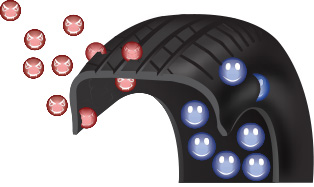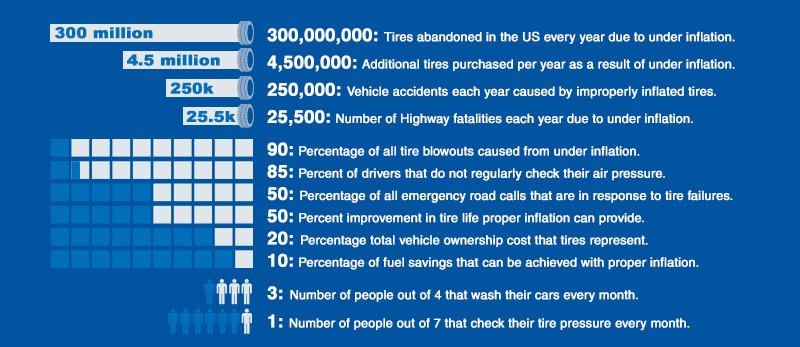
Post Date : 9 May 2022
When it Comes to Tire Inflation, Nothing is Everything! What makes nitrogen such a great inflation gas for tires? Actually, nothing… or more precisely, the fact that it is nothing. Nitrogen is an “inert” gas, meaning it’s a property-free, non-reactive substance or, more simply put: “nothing.” And nothing is exactly what tires should be filled with, as in: nothing but pressure.

So if nitrogen is nothing, it can’t possibly be beneficial… at least until you compare it to the alternative: air. The good old regular air that we have been using to inflate automotive tires for the past 150 years is already 79.1% nitrogen.
The problem with regular air and the reason it is such a poor inflation medium is that it also contains about 20% oxygen. Everyone knows that oxygen is essential for human survival and the wellbeing of almost every other living organism. However, it’s also quite destructive to almost everything else, think “oxidation.” Oxidation, also known as rust, rot and corrosion, is the absolute enemy of anything composed of rubber and steel, such as your tires and wheels. Because nitrogen is an inert gas and oxygen free, it is impossible for oxidation to occur.
Further, without the presence of oxygen … the “O” in “H2O” … water or condensation cannot form in a tire. Hence, no oxygen: no oxidation, no tire rot, no interior wheel or valve rust or corrosion, no water formation or water related issues. While regular air is bad for tires, compressed air is even worse. Running air through a compressor typically adds trace amounts of oil and particulate, as well as water vapor … all combining to further rust, rot, corrode and otherwise compromise your tire and wheel assemblies. As troublesome as oxidation, moisture and the resulting damage they cause are, there is a much greater benefit to eliminating oxygen: better pressure retention. The most detrimental property of oxygen is actually its small molecular structure.
A molecule of oxygen, which again comprises about 20% of regular air, is roughly 1/4 of the size of a molecule of nitrogen. Oxygen molecules are so small that it is completely normal for air filled tires to lose 1-3 PSI each month from “permeation.” Permeation is the normal process by which the oxygen molecules in compressed air seep through a tire’s carcass. It is the reason that your, and everyone else’s, air filled tires constantly lose 1-3 PSI of air every month. Nitrogen filled tires, on the other hand, typically lose no pressure from permeation… even over many months of use. So, by inflating your tires with high purity nitrogen, they will remain at their proper operating pressure much longer.

How Serious is Under Inflation? About as serious as it gets. Americans alone waste over 8.5 million gallons of fuel EACH DAY due to under inflated tires. Here are some more astonishing under inflated numbers:

Underinflated tires wear out faster, fail much more frequently and have a detrimental impact on a vehicle’s fuel economy.
Under inflated tires wear much faster than properly inflated ones because low air pressure distorts a tire’s shape and the way it contacts the pavement, typically grinding the tread off of the sides of the tire’s treaded contact area. Running your tires at a pressure that is just 10% below their preferred pressure setting, typically just 3 – 4 psi, can diminish their usable life by 25%.
This distortion also increases “rolling resistance,” the culprit behind the devastating effect low tire inflation can have on a vehicle’s fuel economy. Essentially, it takes more energy to propel a vehicle with under inflated tires. If you have ever ridden a bicycle or had the misfortune of pushing a car with under inflated tires, you get it, it takes more effort to propel a vehicle with tires that are low on pressure. Potentially a lot more, as studies show that underinflated tires can diminish fuel economy by up to 10%.Under inflation is also the leading cause of tire failures.
According to government statistics, 90 percent of all tire failures are a result of under inflation, primarily due to the buildup of internal heat under inflation generates. Underinflated tires over heat because they can’t maintain their proper shape, becoming flatter than intended while in contact with the road. Tires that are underinflated by just a few pounds can suffer from a weakening of their internal structure and quickly fail.